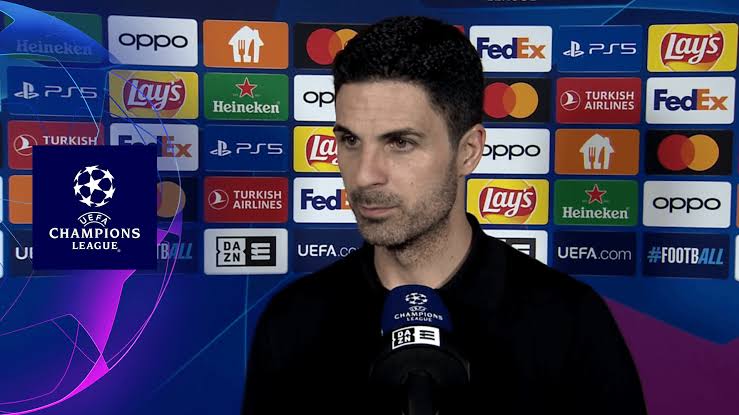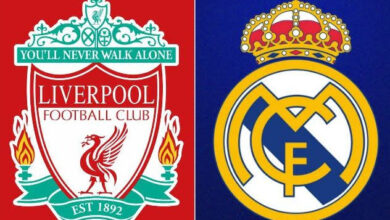Liverpool’s Defensive Dilemma: Analyzing Arne Slot’s Early Challenges at Anfield

Arne Slot’s appointment as Liverpool manager marked the beginning of a new chapter for the Merseyside club, but his early tenure has already highlighted some persistent challenges that have plagued the team in recent seasons. The Dutch tactician, who arrived with considerable pedigree from his successful stint at Feyenoord, has quickly discovered that managing Liverpool comes with unique pressures and complexities that extend far beyond tactical adjustments.
The transition from Jürgen Klopp’s high-intensity, emotion-driven approach to Slot’s more methodical and possession-based philosophy represents a significant shift in Liverpool’s footballing identity. However, beneath the surface of tactical evolution lies a more fundamental concern that has become increasingly apparent in the early stages of the new season: the club’s defensive vulnerabilities, particularly in the full-back positions.
Liverpool’s defensive structure has long been one of the cornerstones of their success under previous management. The full-backs, in particular, have played crucial roles not just defensively but as key contributors to the team’s attacking philosophy. The likes of Andrew Robertson and Trent Alexander-Arnold became emblematic of Liverpool’s approach, providing width in attack while maintaining defensive solidity. However, as Slot has discovered, this system’s effectiveness is heavily dependent on having the right personnel available and fit
The right-back position has emerged as Liverpool’s most problematic area, with Slot facing a selection headache that has only intensified as the season has progressed. The absence of key players through injury has exposed the lack of depth in this crucial position, forcing the manager to make difficult decisions that could have long-term implications for the team’s performance and players’ health.
Trent Alexander-Arnold’s situation remains one of the most pressing concerns for Liverpool. The England international, who has been integral to Liverpool’s success over the past several seasons, represents far more than just a defensive player. His ability to create chances from deep positions, his exceptional crossing ability, and his tactical intelligence have made him one of the most valuable players in the squad. However, his absence through injury has left a significant void that the club has struggled to fill adequately.
The challenge of replacing Alexander-Arnold extends beyond simply finding someone who can defend competently. His unique skill set and understanding of Liverpool’s tactical requirements mean that any replacement must not only provide defensive stability but also contribute meaningfully to the team’s attacking phases. This dual responsibility has proven particularly challenging for the available alternatives, who often excel in one area while lacking in another.
Conor Bradley, the young Northern Ireland international, was expected to provide competition and cover for the right-back position. His pace, energy, and attacking instincts seemed well-suited to Liverpool’s style of play, and many observers viewed him as a natural successor to Alexander-Arnold’s role in the team. However, Bradley’s own injury problems have prevented him from establishing himself as a reliable option, leaving Slot with even fewer choices in this critical position.
The muscular injury that Bradley sustained during the summer preparation period has not only sidelined him for important matches but also highlighted the physical demands placed on full-backs in modern football. The constant sprinting, changes of direction, and high-intensity defensive actions required in this position make players particularly susceptible to muscle strains and similar injuries. For a young player like Bradley, managing these physical demands while adapting to the tactical requirements of top-level football represents a significant challenge.
Joe Gomez’s situation adds another layer of complexity to Liverpool’s defensive planning. The versatile defender, who has shown his ability to play across multiple positions in the backline, was recovering from his own groin problem during the early stages of the season. While his return to fitness provided some relief for Slot, the manager’s cautious approach to his reintegration highlighted the delicate balance between utilizing available players and protecting them from further injury.
Gomez’s ability to play both center-back and full-back positions makes him a valuable asset for Liverpool, particularly during periods when injuries have depleted the squad’s options. However, his recent injury history has made the coaching staff understandably cautious about overextending him too quickly. The decision to limit his playing time upon return, bringing him on for only the final 15 minutes of matches, reflects this careful approach to squad management.
Faced with these personnel challenges, Slot has been forced to explore various tactical solutions and positional adjustments. The use of Wataru Endo as an emergency full-back demonstrates the extent of the crisis and the manager’s willingness to experiment with unconventional solutions. Endo, primarily a defensive midfielder, possesses some of the physical attributes necessary for the full-back role, but his deployment in this position represents a significant tactical compromise.
The Japanese international’s defensive discipline and work rate make him a reliable option in emergency situations, but his limitations in the attacking phases of play become apparent when compared to natural full-backs. His crossing ability, pace in wide areas, and understanding of the overlapping runs that are crucial to Liverpool’s attacking system are all areas where compromises must be made. However, in situations where injuries have limited options, such adaptations become necessary to maintain team balance and competitive performance.
Slot’s tactical flexibility has become evident in how he has approached these personnel challenges. Rather than stubbornly adhering to a fixed system that requires specific types of players, he has shown a willingness to modify formations and player roles to accommodate the available squad members. This pragmatic approach, while sometimes leading to less than ideal solutions, demonstrates the kind of adaptability that is often necessary for successful management at the highest level.
The integration of players like Endo into unfamiliar positions also provides valuable learning experiences for both the individuals and the team as a whole. For Endo, playing as a full-back offers insights into different aspects of the game and can enhance his overall understanding of tactical systems. For the team, having players who can competently fill multiple roles provides greater flexibility and resilience when facing injury crises.
Liverpool’s defensive challenges extend beyond immediate match results and have broader implications for the club’s season-long ambitions. The uncertainty in key defensive positions affects not only the players directly involved but also the overall team structure and confidence. When players are unsure about their positional responsibilities or are playing out of their natural roles, it can create a ripple effect that impacts the entire team’s performance.
The psychological impact of defensive instability cannot be underestimated. Players further up the field may feel compelled to drop deeper to provide additional defensive support, potentially limiting their attacking effectiveness. Similarly, the constant changes in defensive personnel can disrupt the communication and understanding that are crucial for maintaining a solid defensive line.
From a strategic perspective, opponents can exploit these defensive uncertainties by targeting the weaker or less familiar partnerships. Teams facing Liverpool may focus their attacking efforts on the side where inexperienced or converted players are operating, knowing that these areas may be more vulnerable to sustained pressure or specific tactical approaches.
The impact on squad morale and confidence is another consideration that Slot must manage carefully. Players who are asked to fill unfamiliar roles may lack confidence in their ability to perform effectively, while those returning from injury may be hesitant to fully commit to challenges or sprints that could potentially aggravate their problems. Managing these psychological aspects requires careful communication and gradual reintegration processes.
The defensive challenges that Liverpool has faced have inevitably led to discussions about potential solutions in the transfer market. The club’s approach to addressing these issues reflects broader strategic considerations about squad building, financial constraints, and long-term planning that extend well beyond immediate tactical needs.
The modern transfer market presents unique challenges for clubs like Liverpool, who must balance competitive ambitions with financial sustainability. The high costs associated with proven full-backs, particularly those who can contribute effectively in both defensive and attacking phases, mean that any potential signings require careful consideration of their long-term value and fit within the squad structure.
Liverpool’s historically successful approach to player development has emphasized identifying young talents who can be developed within the club’s system rather than pursuing expensive established stars. This philosophy has served the club well in many cases, but it also means that solutions to immediate problems may not be readily available through internal promotion or quick sihnings.
The development of players like Conor Bradley represents this long-term approach in action. Rather than immediately seeking external solutions to the right-back position, the club has invested time and resources in developing young players who understand the club’s tactical requirements and can potentially provide long-term solutions. However, this approach requires patience and may not always align with immediate competitive needs.
Academy graduates and young signings often need time to adapt to the physical and tactical demands of top-level football. The transition from youth to senior football involves not just technical development but also psychological adaptation to increased pressure, higher stakes, and more sophisticated opposition tactics. This development process cannot always be rushed, even when immediate squad needs suggest otherwise.
The recurring nature of injuries to Liverpool’s full-backs highlights the extreme physical demands placed on players in these positions in contemporary football. The evolution of tactical systems has transformed full-backs from primarily defensive players into crucial components of both defensive stability and attacking creativity, significantly increasing the physical load they must bear.
Modern full-backs are expected to cover enormous distances during matches, often spending the game shuttling between defensive and attacking positions. The explosive sprints required to track opposing wingers, followed immediately by attacking runs down the flanks, place tremendous stress on muscle groups and cardiovascular systems. This constant high-intensity movement throughout the 90-minute match makes full-backs particularly susceptible to muscle strains and fatigue-related injuries.
The tactical evolution that has seen full-backs become increasingly important in attack has also changed the technical demands placed on these players. They must possess not only the defensive skills traditionally associated with their position but also the crossing ability, vision, and decision-making typically expected of wingers or attacking midfielders. This dual responsibility requires extensive training in both defensive and attacking scenarios, potentially increasing injury risk through the varied movement patterns and skills required.
Recovery and regeneration become crucial factors in managing full-backs effectively. The high-intensity nature of their role means that adequate rest between matches is essential, but the modern football calendar often doesn’t allow for optimal recovery periods. This creates a challenging cycle where players may be asked to perform at high intensity while not fully recovered from previous exertions, increasing the likelihood of injuries.
Liverpool’s approach to managing these physical demands involves sophisticated monitoring systems that track players’ physical output, recovery rates, and injury risk indicators. However, even with advanced sports science support, the fundamental challenge remains: how to maintain competitive performance while protecting players from the injury risks associated with their demanding roles.
Slot’s approach to managing these challenges reflects his broader management philosophy and his ability to adapt to circumstances beyond his immediate control. The Dutch manager’s background at Feyenoord provided him with experience in developing tactical flexibility and working with limited resources, skills that have proven valuable in addressing Liverpool’s current defensive issues.
His communication style and approach to player management have become evident in how he has handled the various injury situations and positional changes. Rather than creating panic or frustration around the defensive problems, Slot has maintained a calm and methodical approach, focusing on solutions rather than dwelling on limitations. This leadership style helps maintain squad confidence and prevents minor issues from becoming major disruptions.
The manager’s willingness to experiment with different formations and player roles demonstrates a pragmatic approach to problem-solving that prioritizes team needs over rigid tactical preferences. This flexibility, while sometimes requiring compromises, shows an understanding that successful management often involves finding the best available solutions rather than waiting for perfect conditions.
Slot’s emphasis on player development within his tactical system has also become apparent in how he has integrated players into unfamiliar roles. Rather than simply asking players to fill positions temporarily, he has provided specific tactical instructions and support to help them understand their responsibilities and develop confidence in their new roles.
The building of trust between manager and players has been crucial in successfully implementing these tactical adaptations. Players need to believe in the manager’s decisions and feel supported when asked to step outside their comfort zones. Slot’s clear communication and tactical explanations help create this trust and enable players to perform effectively in challenging circumstances.
The defensive challenges that Liverpool has faced under Slot’s early management provide valuable lessons for future squad planning and tactical development. These experiences highlight the importance of depth in key positions and the need for players who can competently fill multiple roles when circumstances require it.
The club’s approach to addressing these issues will likely influence their transfer strategy and youth development programs in the coming seasons. The identification of versatile players who can contribute effectively in different positions becomes even more valuable when considering the unpredictable nature of injuries and tactical requirements throughout a long season.
Investment in sports science and injury prevention programs may also receive increased attention as the club seeks to minimize the impact of physical problems on squad availability. The advanced monitoring and prevention techniques available in modern football can help identify potential issues before they become serious injuries, allowing for proactive management of player fitness and availability.
The development of tactical systems that can accommodate different types of players in key positions may also become a priority. Rather than relying on specific player profiles for certain roles, creating tactical flexibility that allows for various player types to contribute effectively provides greater resilience when facing personnel challenges.
Youth development programs may also need to emphasize versatility and adaptability, producing players who can contribute effectively in multiple positions rather than specializing exclusively in single roles. This approach, while potentially slowing initial development in specific areas, provides greater long-term value for squad building and tactical flexibility.
Arne Slot’s early experience as Liverpool manager has demonstrated both the challenges and opportunities that come with managing at the highest level of football. The defensive problems that have emerged, particularly in the full-back positions, reflect broader issues around squad depth, player development, and tactical adaptation that extend well beyond immediate match concerns.
The manner in which these challenges have been addressed reveals important aspects of Slot’s management approach and Liverpool’s organizational philosophy. The emphasis on finding solutions rather than dwelling on problems, the willingness to experiment with tactical adjustments, and the careful management of player fitness and confidence all contribute to the club’s ability to maintain competitive performance despite significant obstacles.
The lessons learned from these early challenges will likely influence Liverpool’s approach to squad building, tactical development, and player management for years to come. The experience of managing with limited options in key positions provides valuable insights into the importance of depth, versatility, and tactical flexibility in modern football.
As the season progresses and injured players return to fitness, the true test of these adaptations will become apparent. The ability to maintain competitive performance while managing player welfare and development challenges represents one of the fundamental skills required for successful management at Liverpool’s level.
The broader implications of these defensive challenges extend beyond immediate tactical considerations to encompass questions of player development, transfer strategy, and long-term planning that will shape Liverpool’s future success. Slot’s handling of these early tests provides encouraging signs of his ability to navigate complex challenges while maintaining focus on the club’s competitive ambitions and developmental objectives.















